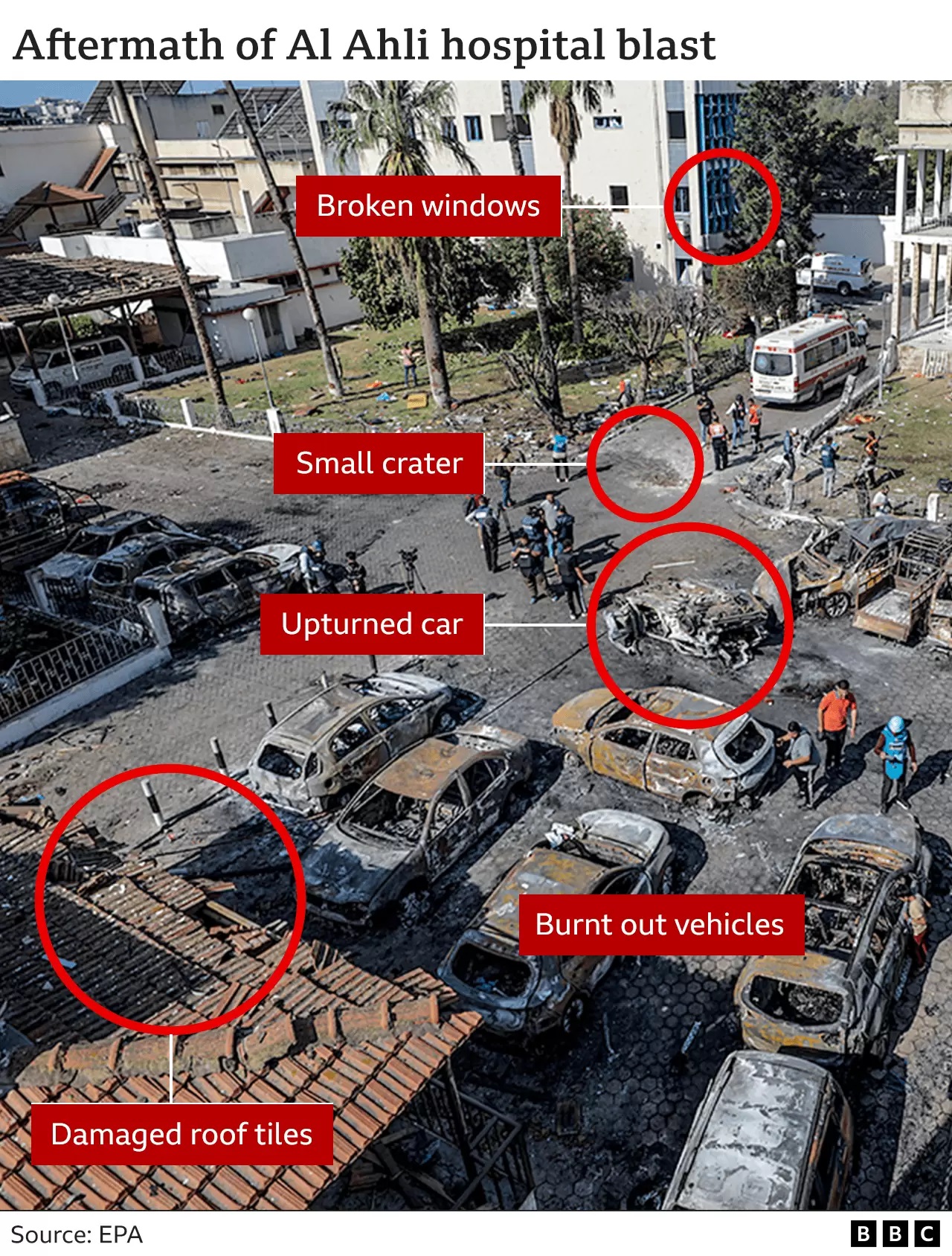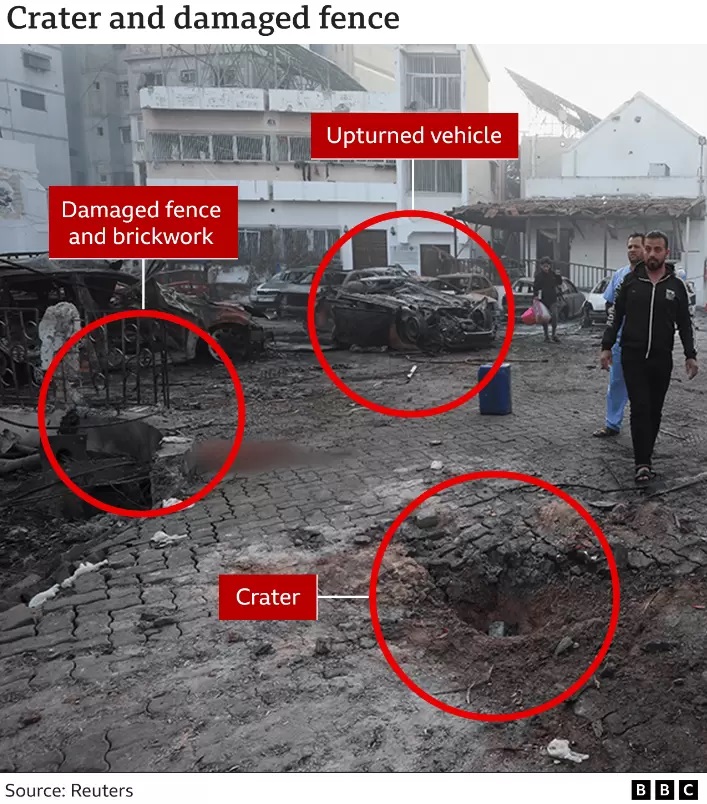
Newsroom
In the midst of Israeli and Palestinian disputes regarding the bombing of Al-Ahli Hospital in Gaza, the BBC's Verify service is working to piece together the events by scrutinizing videos, images, and other evidence, including eyewitness accounts.
The hospital explosion took place around 19:00 local time on Tuesday. A 20-second video, circulated on social media, claiming to depict the explosion, was the initial significant lead in the incident.
Live footage from Al Jazeera Media Network, aired at 18:59 local time, captured a bright object over Gaza. It flashed twice, changed direction dramatically, and then exploded.
 Some observers suggest it might be a rocket that appeared to explode or disintegrate. Additional footage from various social media sources shows the same explosion from different angles and distances.
Some observers suggest it might be a rocket that appeared to explode or disintegrate. Additional footage from various social media sources shows the same explosion from different angles and distances.
As of now, the findings do not provide conclusive answers. Three experts believe the evidence is inconsistent with a typical Israeli airstrike. Andres Gannon, an assistant professor at Vanderbilt University in the US, suggests that the small craters in the ground may have been caused by rocket debris. Justin Bronc, a senior research fellow at the UK-based Royal United Services Institute, agrees. Although it's challenging to confirm at this early stage, the evidence points to the explosion being the result of a missile failure.
The BBC verified the location of the incident using publicly available satellite images, confirming that the explosion occurred at the hospital.
Based on the available evidence, it appears that the explosion happened in a courtyard within the hospital's premises. Images following the explosion show no significant damage to the surrounding hospital buildings.
The hospital is owned and managed by the Anglican Church. The rector of St. George's College in Jerusalem informed the BBC that about 1,000 displaced people were in the hospital's courtyard when it was struck, while approximately 600 patients and staff were inside the building.
A BBC reporter visited the hospital this morning and learned that women, children, and the elderly were at the hospital when the explosion occurred.
Pathologist Derrick Powder, a founding member of Physicians for Human Rights in the UK specializing in conflict injuries, analyzed some of the images. He stated, "The scattered wounds are most likely from shrapnel due to an explosion."

The Palestinian Health Ministry reported 471 fatalities on Wednesday. The Israeli side disputed this figure, alleging an intentional inflation, but did not provide its own estimate. Due to limited access by independent organizations to the area, confirming the death toll is challenging.
One crucial aspect is the nature of the crater left behind by the explosion. The Israeli military argues that the absence of a large crater suggests that Israeli forces were not responsible.
Another missing element is missile fragments. Typically, projectiles can be identified by remnants of their shells, helping determine their origin. In this case, such evidence has not been seen, as noted by the BBC.
The IDF released an audio recording of what they claim was an intercepted conversation between two Hamas militants acknowledging that the hospital was hit by a projectile fired by the Palestinian Islamic Jihad (PIJ). However, it's not independently verifiable, and PIJ denied involvement, instead blaming Israel for the explosion.































